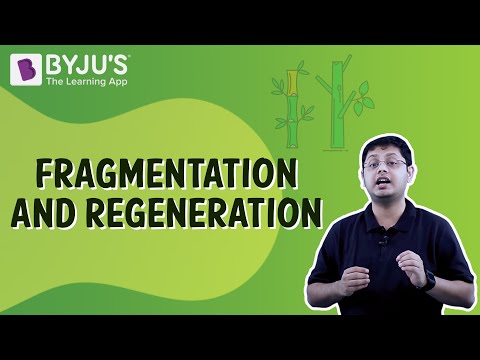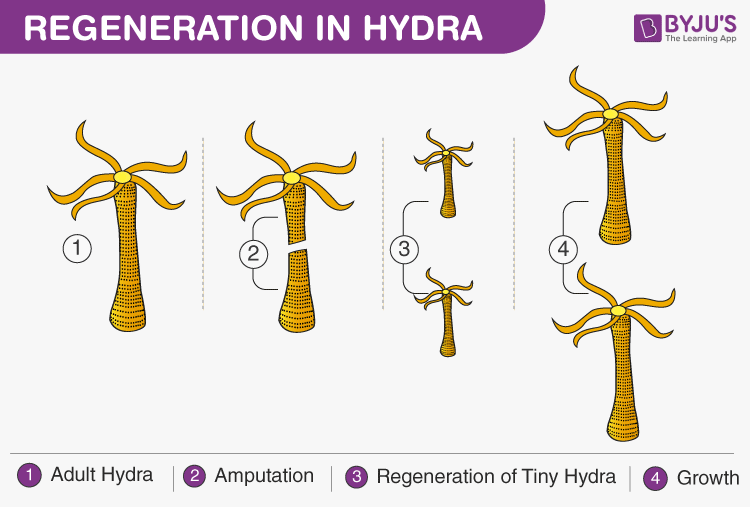What is Regeneration?
Regeneration is one of the processes in which if an organism is cut into several pieces, each of its parts regrows to the original state. This process is carried out by specialized cells called stem cells. It takes place in organisms that have a very simple structure with very few specialized cells.
The cells divide quickly into a large number of cells. Each cell undergoes changes to form various cell types and tissues. This sequential process of changes is known as development. The tissues form various body parts and organs.
Types of Regeneration
There are two types of regeneration:
Morphallaxis
This type of regeneration has little growth and depends upon tissues repatterning. For eg., Hydra grows by loss of cells from its end and by budding. When cut into two, the upper part develops into foot while the lower part develops into the head. The formation of nearby heads is inhibited by the head region.
Epimorphosis
This type of regeneration depends upon the growth of new and properly patterned structures. For eg., regeneration of a vertebrate limb. It involves cell dedifferentiation and growth. The epidermal cells form a blastema. The blastema gives rise to structures with positional distal values. Retinoic acid changes proximal-distal values in limb regeneration.
Which Organisms can Regenerate?
Regeneration occurs in organisms like hydra, flatworms, tapeworms. They have highly adaptive regenerative capabilities. When an organism is wounded, its cells are activated and the damaged tissues and organs are remodelled back to the original state.
Regeneration is very prominent among metazoans. Starfish, crayfish, reptiles, and amphibians also exhibit signs of tissue regeneration. It is not the same as reproduction. In some animals such as the lizard, the shed limb regrows into the original organ.
Regeneration can happen in many different ways using pluripotent stem cells. Some regeneration does not require stem cells. After amputation, stem cells accumulate at the site of injury. The cells then start dividing to form the missing tissue. But not all animals use the pluripotent cells for regeneration.
Regeneration in Plants
Plants can regenerate all body part from the precursor cells. For eg., several trees are cut at the bottom. After some time sprouts appear at the margin of the stump that develop into new leaves, flowers, and stems.
The entire plant can be developed by callus differentiation in the laboratory through plant tissue culture.
Regeneration in Hydra
Hydra had been used as the model of regeneration since time immemorial. Once wounded their cells start to regenerate and grow into pre-existing cells.
Hydra grows by continuously losing cells from its base and by budding
↓
A gradient of inhibitor is produced by the head. This prevents the formation of other heads
↓
The concentration of inhibitor is reduced
↓
The positional value increases locally
↓
A new head is formed without any new growth
Can Humans Regenerate?
Regeneration is a process also visible in humans. Our skin gets renewed from time to time. The liver also has the ability to regrow if a part of the liver is damaged due to some disease. Thus, we see regeneration as an integral part of healing.

For more information on Regeneration, keep visiting BYJU’S website or download BYJU’S app for further reference.
Related Links
| Binary Fission |
| Fragmentation |


Nice